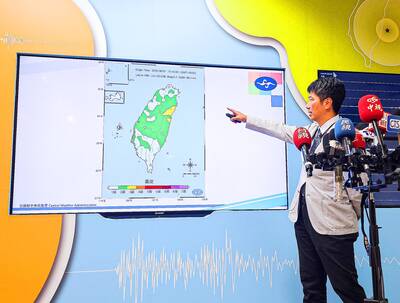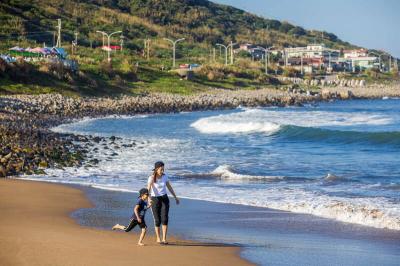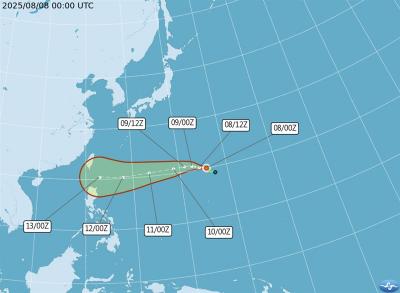Non-official, private and academic dialogue is needed to push for the East China Sea peace initiative proposed by Taiwan, according to Song Yann-huei (宋燕輝), a research fellow at the Institute of European and American Studies at Academia Sinica.
The initiative was proposed by President Ma Ying-jeou (馬英九) on Aug. 5 last year and calls for all parties that lay territorial claims to the Diaoyutai Islands (釣魚台) — known as the Senkaku Islands in Japan — in the East China Sea to put aside their disputes and jointly explore the island groups and adjacent waters. It has won the support of many academics around the world.
Saying that Ma has said it might take some time for the initiative to be fully realized, Song said the process could be speeded up if more effort is put into it.
The initiative cannot be achieved at one stroke; rather, it needs the joint efforts of many different government organizations and they have to flesh it out with more detailed, and well-conceived plans, he said.
He suggested dialogue similar to the South China Sea Conference that has been staged annually since 1990 to discuss the potential for conflict in the South China Sea. Although it is a non-official forum, its participants are mostly government representatives of different countries who have worked out a code of conduct for the South China Sea.
If there is a trilateral dialogue among think tanks, academics and civic groups from Taiwan, Japan and China, such as a dialogue between their fishermen’s groups, very sensitive issues can be discussed because they are not official representatives, he said.
With regard to bilateral dialogue between the three parties, Song said that senior Chinese and Japanese officials were sure to meet. Taiwan and Japan will also hold such a dialogue, which could cover issues other than fishing rights, such as environmental protection and a tsunami warning system, he said.

Aftershocks from a magnitude 6.2 earthquake that struck off Yilan County at 3:45pm yesterday could reach a magnitude of 5 to 5.5, the Central Weather Administration (CWA) said. Seismological Center technical officer Chiu Chun-ta (邱俊達) told a news conference that the epicenter of the temblor was more than 100km from Taiwan. Although predicted to measure between magnitude 5 and 5.5, the aftershocks would reach an intensity of 1 on Taiwan’s 7-tier scale, which gauges the actual effect of an earthquake, he said. The earthquake lasted longer in Taipei because the city is in a basin, he said. The quake’s epicenter was about 128.9km east-southeast

GENSLER SURVEY: ‘Economic infrastructure is not enough. A city needs to inspire pride, offer moments of joy and foster a sense of belonging,’ the company said Taipei was named the city with the “highest staying power” in the world by US-based design and architecture firm Gensler. The Taiwanese capital earned the top spot among 65 cities across six continents with 64 percent of Taipei respondents in a survey of 33,000 people saying they wanted to stay in the city. Rounding out the top five were Vietnam’s Ho Chi Minh City (61 percent), Singapore (59 percent), Sydney (58 percent) and Berlin (51 percent). Sixth to 10th place went to Monterrey, Mexico; Munich, Germany; Sao Paulo, Brazil; Vancouver; and Seoul. Cities in the US were ranked separately, with Minneapolis first at

The New Taipei City Government today warned about the often-overlooked dangers of playing in water, and recommended safe swimming destinations to cool off from the summer heat. The following locations in the city as safe and fun for those looking to enjoy the water: Chienshuiwan (淺水灣), Baishawan (白沙灣), Jhongjiao Bay (中角灣), Fulong Beach Resort (福隆海水浴場) and Sansia District’s (三峽) Dabao River (大豹溪), New Taipei City Tourism and Travel Department Director-General Yang Tsung-min (楊宗珉) said. Outdoor bodies of water have variables outside of human control, such as changing currents, differing elevations and environmental hazards, all of which can lead to accidents, Yang said. Sudden

Tropical Storm Podul has formed over waters north-northeast of Guam and is expected to approach the seas southeast of Taiwan next week, the Central Weather Administration (CWA) said today. The 11th Pacific storm of the year developed at 2am over waters about 2,660km east of Oluanpi (歐鑾鼻), Pingtung County — Taiwan's southernmost tip. It is projected to move westward and could have its most significant impact on Taiwan on Wednesday and Thursday next week, the CWA said. The agency did not rule out the possibility of issuing a sea warning at that time. According to the CWA's latest update, Podul is drifting west-northwest